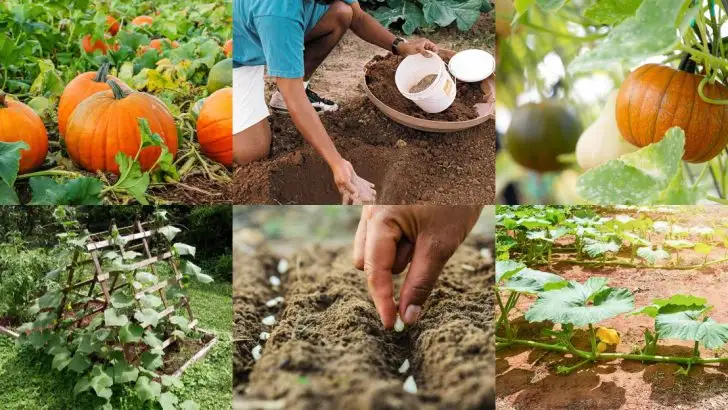Pumpkins aren’t just for pies and porches—they’re climbing stars waiting for their moment. Yes, climbing. Forget sprawling vines that gobble up your yard like botanical spaghetti. With the right trellis, pumpkins grow up, not out—turning chaos into pure garden theater. But don’t wing it. Pumpkins are picky divas. One wrong move and you’re left with tangled stems, top-heavy flops, or sad, sun-starved fruit. These 14 tips are your backstage pass to building a trellis that’s both strong and stunning—one that’ll have your pumpkins posing like supermodels by fall. So grab your garden gloves, channel your inner architect, and let’s make some magic in the vertical veggie world.
Choose the Right Location
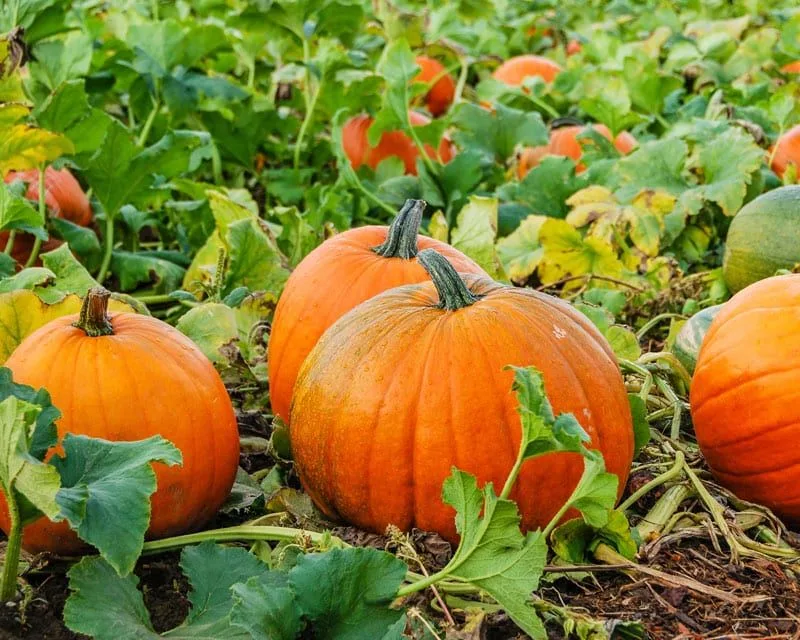
Selecting the ideal spot is crucial for your pumpkin trellis. Look for a sunny area, as pumpkins thrive with at least six hours of sunlight daily. Ensure the soil is rich and well-drained to support healthy growth.
Consider the wind factor; a location sheltered from strong winds will prevent damage. A windbreak or nearby structure can offer protection.
Also, think about accessibility for watering and maintenance. An easily reachable spot will make regular care more convenient. A well-chosen location sets the foundation for a fruitful pumpkin harvest.
Prepare the Soil
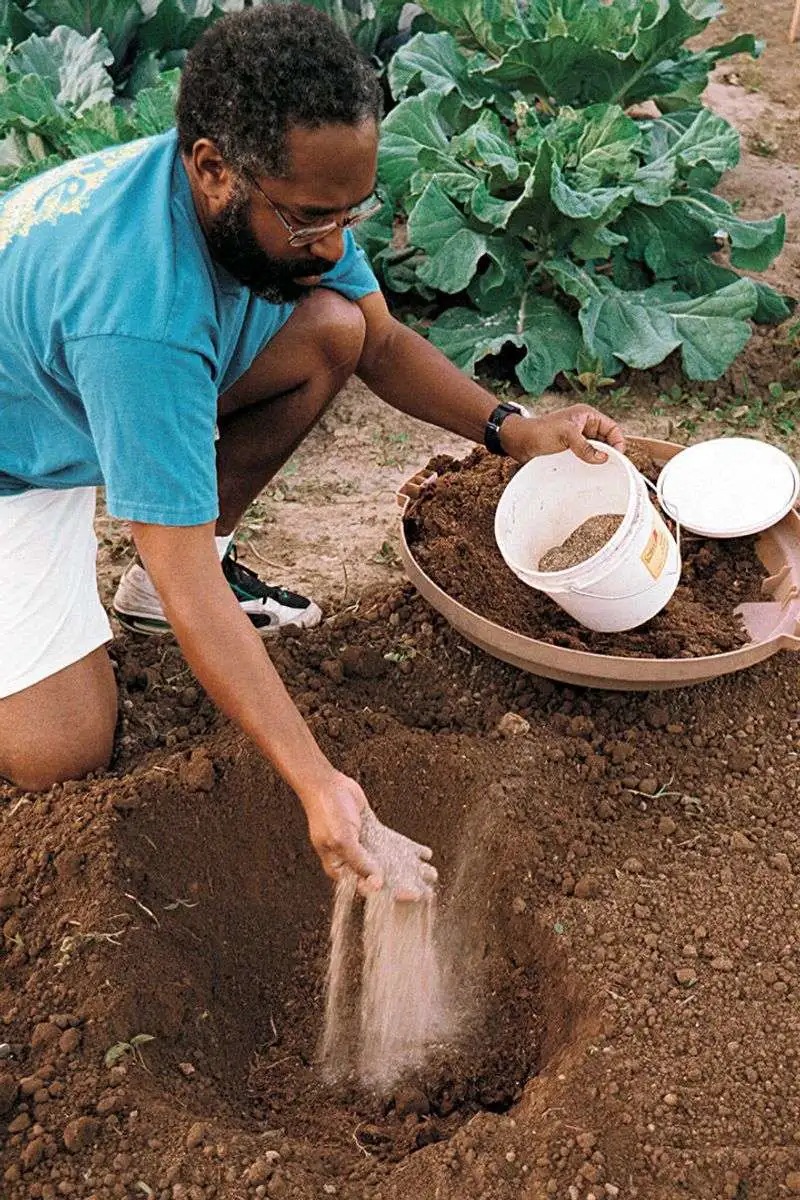
The foundation of a thriving pumpkin trellis is in the soil. Start by testing the pH level, aiming for a slightly acidic to neutral range, around 6.0 to 7.5. Amend the soil with organic matter like compost or well-rotted manure to enhance fertility.
Loosen the soil to improve drainage and root penetration. A well-prepared bed encourages robust growth and helps pumpkins absorb nutrients efficiently.
Finally, consider adding a slow-release fertilizer. This ensures steady nourishment as your pumpkins grow, leading to a vibrant, healthy trellis.
Select the Right Pumpkin Variety
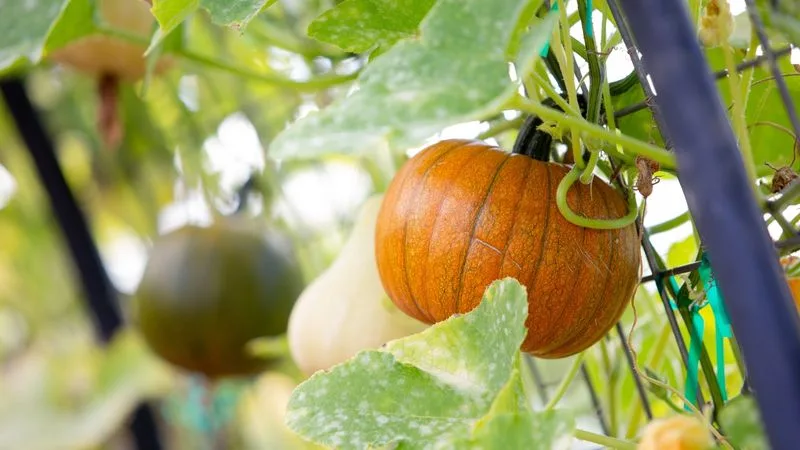
Choosing the right pumpkin variety can make all the difference in your trellis’ success. Smaller varieties, like ‘Jack Be Little’ or ‘Sugar Pie,’ are ideal for vertical growing due to their manageable weight.
These varieties not only look charming but also ensure that your trellis remains sturdy and intact. Larger pumpkins can be too heavy, risking damage.
Researching the growth habits and compatibility of different varieties helps in making an informed choice. A well-selected variety complements both your garden’s aesthetic and structural needs.
Design a Strong Trellis
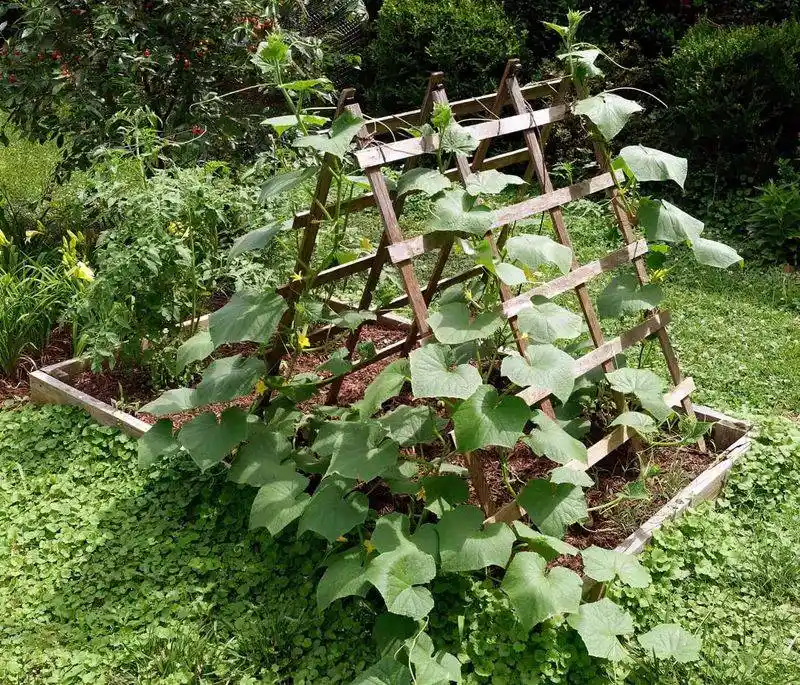
Building a robust trellis is essential for supporting your pumpkins. Opt for durable materials like treated wood or metal that can withstand weather changes and weight.
A lattice or A-frame design offers excellent support and stability, allowing vines to climb effectively. Consider the height; a taller trellis maximizes vertical space and sunlight exposure.
Ensure the structure is securely anchored to prevent tipping over as the vines grow heavier. A well-designed trellis enhances both functionality and visual appeal in your garden.
Plant Seeds at the Right Time

Timing is key when planting pumpkin seeds for a fall trellis. Begin sowing seeds indoors about three weeks before the last frost, then transplant them once the soil warms.
This head start ensures that the vines have ample time to grow and mature. For direct sowing, wait until the danger of frost has passed and the soil temperature reaches at least 70°F.
Proper timing aligns the growth cycle with favorable weather conditions, promoting healthy development and a successful harvest.
Train the Vines Early
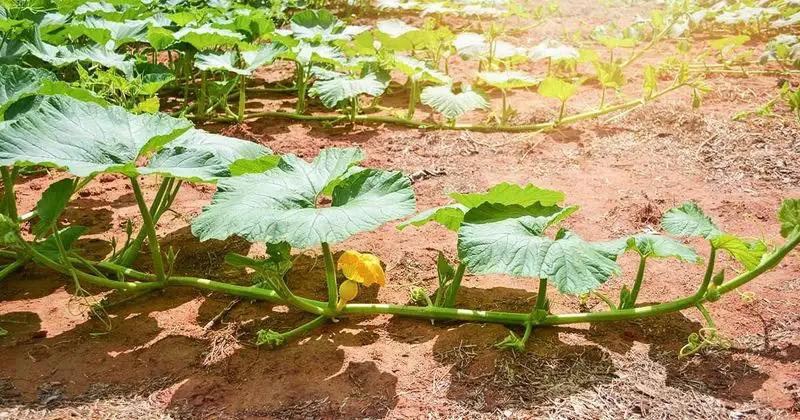
Training your pumpkin vines early can lead to a neat, productive trellis. As the vines grow, gently guide them onto the trellis structure, using soft ties or twine to secure them.
This proactive approach prevents tangling and ensures that the vines follow your desired path. Regularly check and adjust the ties to accommodate growth and prevent damage.
By training the vines early, you encourage even coverage and maximize space, resulting in an impressive display as pumpkins develop.
Mulch for Moisture Retention
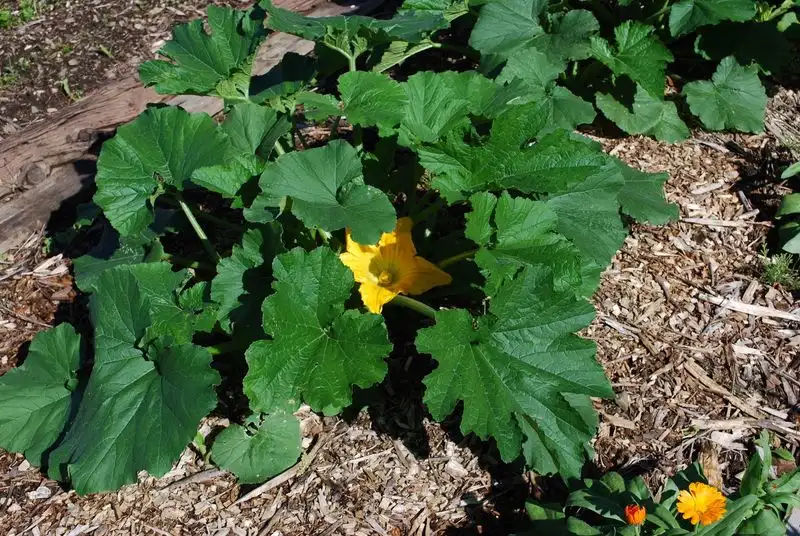
Mulching is a valuable practice for maintaining moisture around your pumpkin plants. Use organic materials like straw or wood chips to cover the soil surface, reducing evaporation.
This layer not only conserves water but also regulates soil temperature and suppresses weeds. Regular replenishing keeps the mulch effective and your pumpkins thriving.
Mulching creates a favorable microenvironment for root development, contributing to the overall health and vigor of your pumpkin trellis.
Provide Consistent Watering

Consistent watering is crucial for pumpkin growth. Aim for about one to two inches of water per week, adjusting based on weather conditions. Use a soaker hose or drip system to deliver water directly to the roots.
This method minimizes foliage wetness, reducing disease risk. Water deeply but infrequently to encourage deep root growth.
Regular monitoring helps maintain optimal soil moisture levels, ensuring that your pumpkins receive the hydration they need for robust development.
Fertilize Wisely
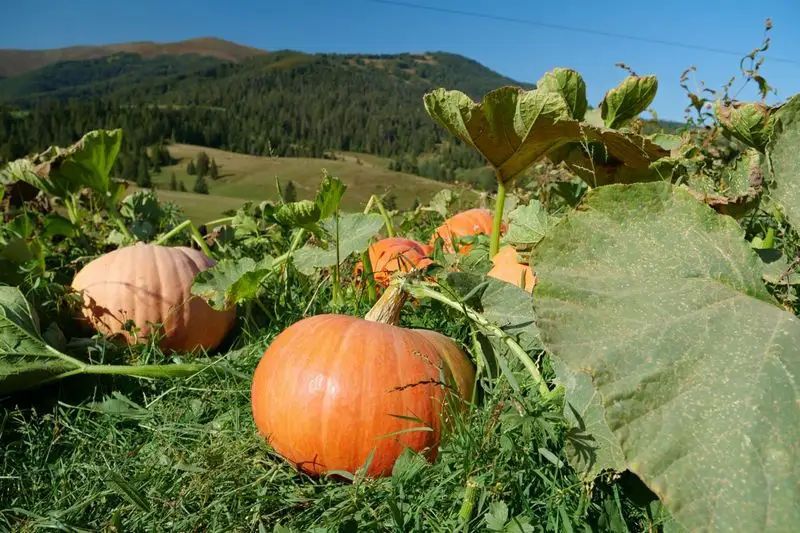
Wise fertilization practices enhance the growth of your pumpkins. Start with a balanced, all-purpose fertilizer at planting, then switch to a high-potassium variety as fruits develop.
This approach supports both vegetative growth and fruit setting, optimizing your harvest. Organic options like compost tea can be beneficial, providing a gentle nutrient boost.
Regular fertilization ensures continuous supply of essential nutrients, helping your pumpkin trellis reach its full potential.
Monitor for Pests

Keeping an eye out for pests protects your pumpkin plants from damage. Common culprits include squash bugs and aphids, which can be deterred through regular inspection and prompt action.
Introducing beneficial insects, like ladybugs, can naturally control pest populations. Consider using organic pest control methods to minimize chemical use.
Vigilant monitoring prevents infestations and ensures your pumpkin trellis remains healthy and productive.
Support Heavy Pumpkins

Supporting heavy pumpkins is essential to prevent damage. As fruits grow, use slings or hammocks made from fabric or netting to cradle them.
These supports distribute the weight evenly and protect the vines from stress. Adjust the supports as the pumpkins increase in size, ensuring they remain secure.
Providing support is crucial for maintaining the integrity of both the fruit and the trellis, leading to a successful harvest.
Prune for Healthier Growth

Pruning is a technique that promotes healthier growth in your pumpkin plants. Remove excess vines and leaves to enhance air circulation and light penetration.
This practice reduces disease risk and directs energy towards fruit development. Pruning also helps manage the plant’s size, keeping it in balance with your trellis structure.
Regular pruning contributes to a well-maintained and flourishing pumpkin trellis, supporting robust health and productivity.
Harvest at the Right Time
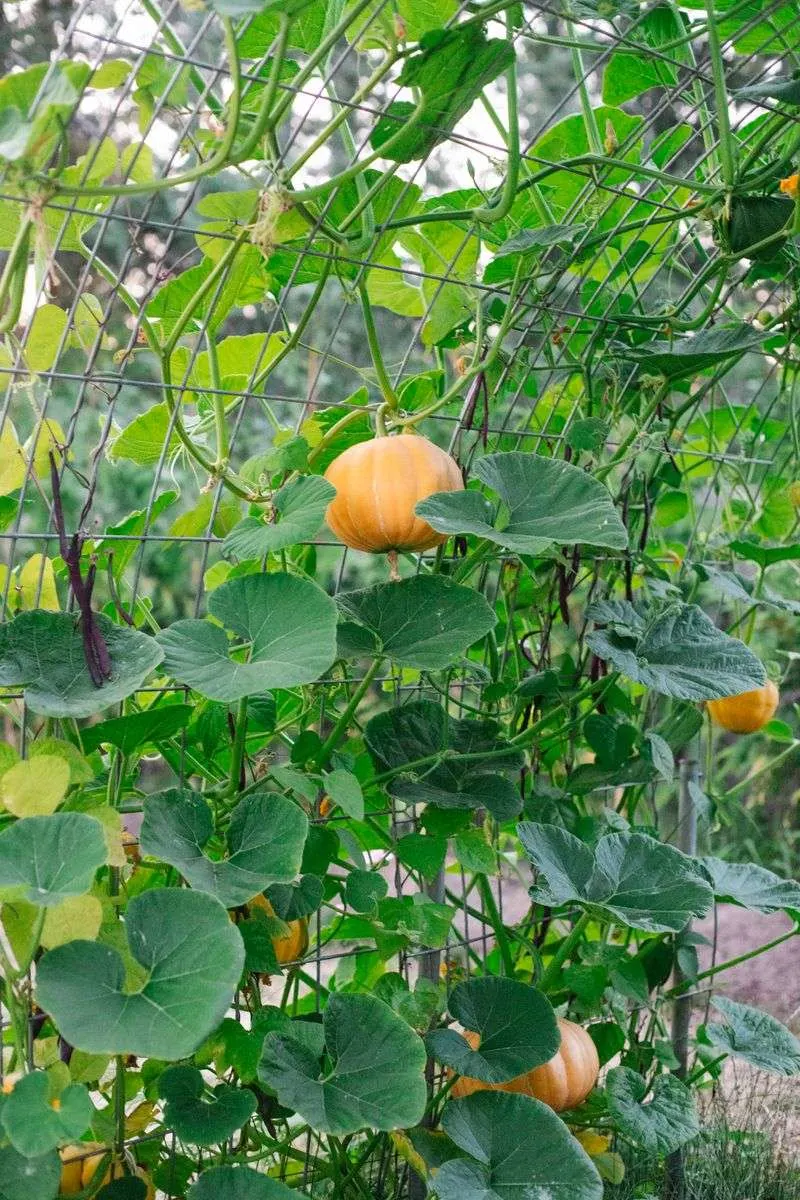
Knowing when to harvest ensures the best quality pumpkins. Look for a deep, consistent color and a hard rind that resists puncture.
Gently twist or cut the stem to avoid damaging the vine. Leave a few inches of stem attached to increase storage life.
Timing your harvest carefully ensures that you enjoy fully matured pumpkins, perfect for autumn festivities and culinary creations.
Prepare for Winter
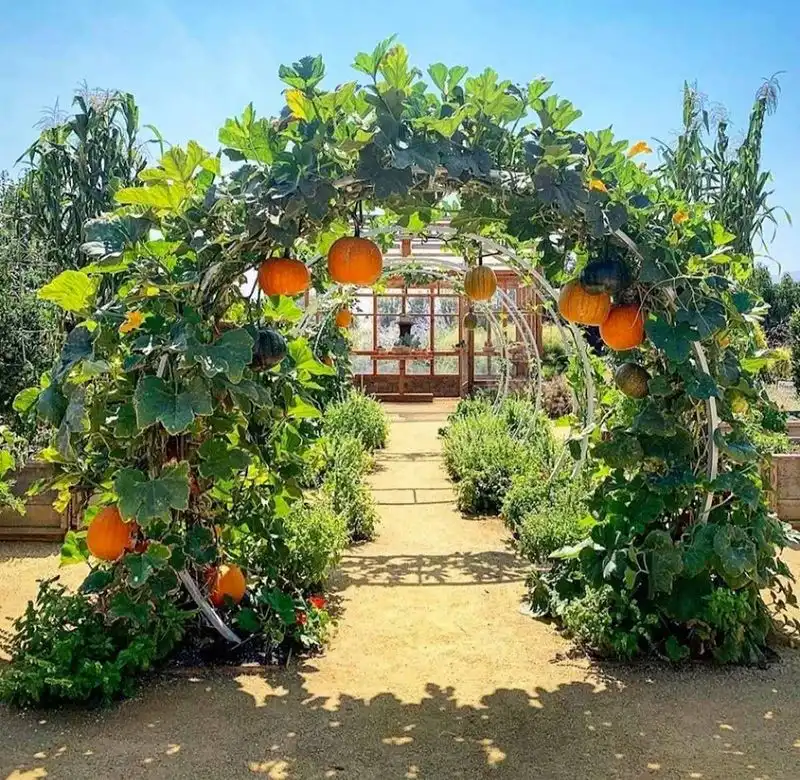
Preparing your pumpkin trellis for winter extends its lifespan. Clear away debris and dead plants to prevent overwintering pests.
Add a layer of mulch to protect the soil and root systems from freezing temperatures. This practice also enriches the soil for the next growing season.
Securing your trellis against harsh weather ensures it remains a beautiful feature in your garden year after year.

